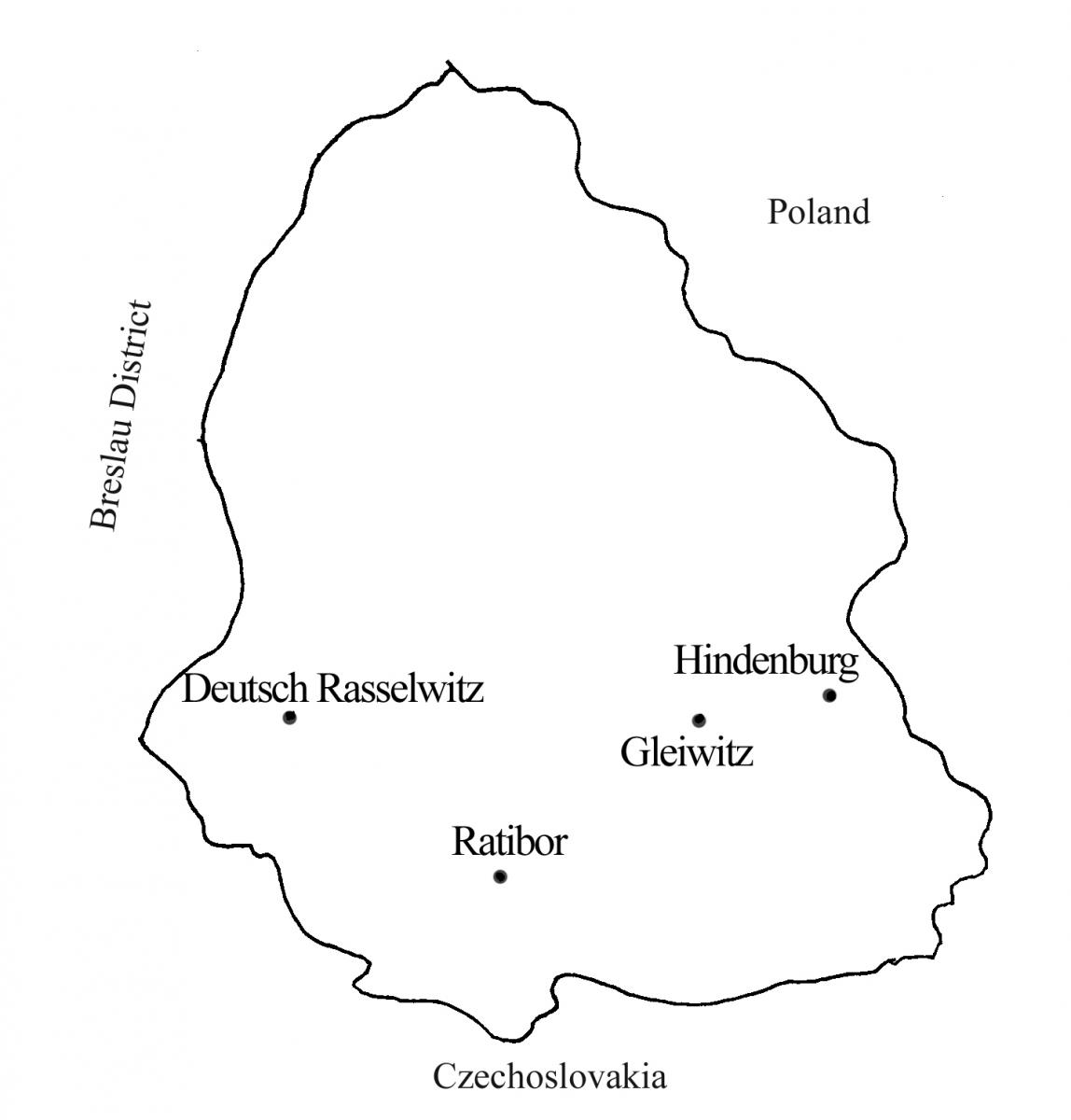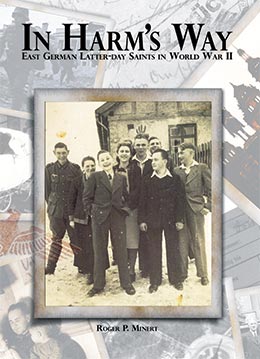Hindenburg District
Roger P. Minert, In Harm’s Way: East German Latter-day Saints in World War II (Provo, UT: Religious Studies Center, Brigham Young University, 2009), 275-6.
The Hindenburg District of the East German Mission of The Church of Jesus Christ of Latter-day Saints was the smallest district in the mission in both area and population. It was situated at the farthest eastern-central extent of Germany in 1939. There were only seventy-two members in three branches and one group in the district.
The city of Hindenburg was located at the eastern end of the territory. All of the branches were within just a few miles of the German borders with Poland and Czechoslovakia. The distance from Hindenburg to the office of the East German Mission in Berlin was 240 miles—a full day’s journey by railroad in those days.
 The branches of the Hindenburg District
The branches of the Hindenburg District
The Hindenburg District was organized just prior to World War II. The history of the East German Mission includes these details:
Sunday, 10 July 1938: A special meeting was held in the Hindenburg Branch to organize the new Hindenburg District. Brother Martin Werner Hoppe, president of the Breslau District, presided. The branches of Hindenburg, Gleiwitz, and Ratibor were taken from the Breslau District and organized into the new Hindenburg District. Elder Ray D. Zollinger [a young missionary from the United States] was sustained president of the new district.[1]
| Hindenburg District[2] | 1939 | 1940 | 1941 | 1942 |
| Elders | 3 | 3 | ||
| Priests | 4 | 4 | ||
| Teachers | 1 | 1 | ||
| Deacons | 3 | 3 | ||
| Other Adult Males | 9 | 9 | ||
| Adult Females | 41 | 43 | ||
| Male Children | 6 | 7 | ||
| Female Children | 5 | 5 | ||
| Total | 72 | 75 | 79 | 79 |
On October 16, 1938, the first conference of the new district was held in the rooms of the Hindenburg Branch under the leadership of mission president Alfred C. Rees.[3]
In addition to the branch in the city of Hindenburg, there was a branch in Ratibor, twenty-four miles southwest of Hindenburg, and another in Gleiwitz, ten miles west. The name Gleiwitz is still associated with infamy because it was at the German-Polish border near Gleiwitz that Hitler’s government staged an “attack” by Polish troops on a radio station.[4] The trumped-up affair was used as the justification for the invasion of Poland by German troops beginning on Friday, September 1, 1939.
No information regarding the Hindenburg District is found in the journal of the East German Mission after 1939. When a letter was sent by East German Mission leaders to all district presidents on August 12, 1941, no district president in Hindenburg was included among the addressees. It is possible that nobody was called to succeed Elder Zollinger, who was evacuated from Germany with the other American missionaries on August 25, 1939.
All of the Hindenburg District territory was ceded to Poland following World War II. After the Polish government forced the evacuation of German citizens from the region in late 1946, all traces of the presence of The Church of Jesus Christ of Latter-day Saints there were lost.
Notes
[1] East German Mission Quarterly Reports, 1938, no. 29, East German Mission History.
[2] Presiding Bishopric, “Financial, Statistical, and Historical Reports of Wards, Stakes, and Missions, 1884–1955,” CR 4 12, 257.
[3] East German Mission Quarterly Reports, 1938, nos. 41–42.
[4] It was later determined that the “Polish soldiers” were actually criminals from German prisons attired in Polish uniforms. All dead soldiers shown to the media had been executed by the SS.
